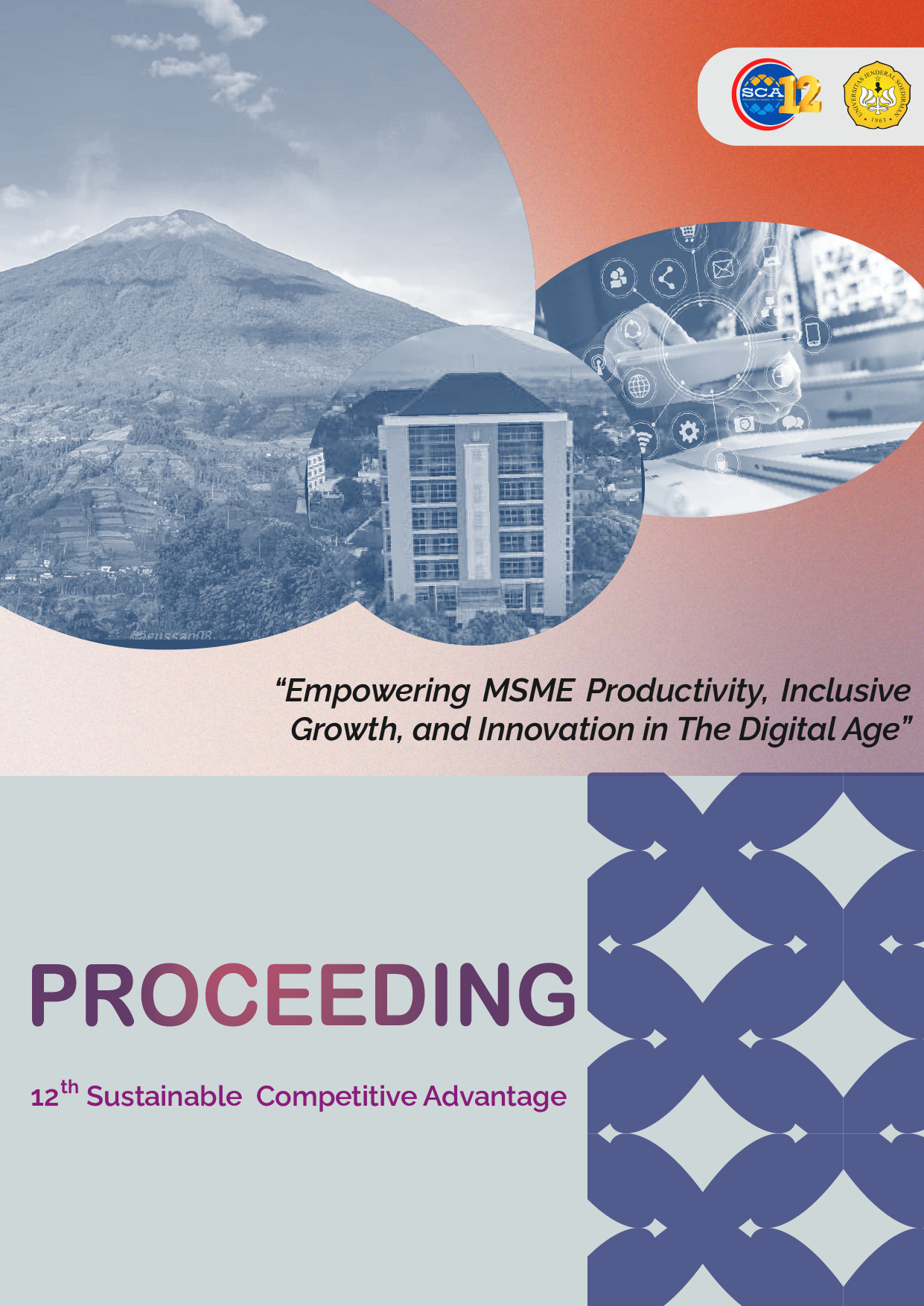The Role of Leaders in Building Creativity Through Creative Self- Efficacy and Innovation Climate
Abstract
The purpose of this study is to analyze the impact of transformational leadership on employee creativity through mediating factors such as the innovation climate and creative self-efficacy in the context of public organizations. The research method used is a quantitative method. The research location is PT. Ethos Kreatif Indonesia. The sampling method used the Slovin formula with a 95% confidence level and a 5% error rate. The sample size used was 152 respondents. The data analysis method used regression testing. The study findings show that transformational leadership enhances employee creativity. Creative self- efficacy and innovation climate as mediation were also found to partially mediate between transformational leadership and employee creativity.
Keywords: Transformational Leadership, Creative Self-efficacy, Innovation Climate, Creativity
References
Afsar, Bilal & Mariam Masood. (2017). Transformational leadership, creative self-efficacy, trust in supervisor, uncertainty avoidance, and innovative work behavior of nurses. The Journal of Applied Behavioral Science, 54, (1).
Avolio, B.J., & Bass, B.M. (2004). Multifactor Leadership Questionnaire (MLQ). Mind Garden, Redwood City, CA. p. 29.
Bandura, A. (1997). Self-efficacy: The Exercise of Control. New York, NY: Freeman.
Bass, Bernard M & Ronald E. Riggio. (2006). Trasnformational Leadership. London: Lawrence Erlbaum Associates
Çekmecelioğlu, H.G., & Gönül Kaya Ö. (2016). Leadership and creativity: the impact of transformational leadership on individual creativity. Procedia Social and Behavioral Sciences, 235, 243-249.
Chaubey, A., Chandan Kumar Sahoo, & Naresh Khatri. (2019). Relationship of transformational leadership with employee creativity and organizational innovation: a study of mediating and moderating influences. Journal of Strategy and Management.
Chun-Hsi Vivian Chen., Hung-Hui LiandYa-Yun Tang. (2009). Transformational leadership and creativity: exploring the mediating effects of creative thinking and intrinsic motivation. International Journal of Management and Enterprise Development, 6, (2), 198-211.
Yammarino, Francis, J., & Bernard M. Bass. (1990). Transformational leadership and multiple levels of analysis. Sage Journals, 43, (10).
Gong, Y., Jia-Chi Huang & Jiing-Lih Farh. (2009). Employee learning orientation, transformational leadership, and employee creativity: the mediating role of employee creative self-efficacy. Academy of Management Journal, 52, (4).
Gumusluoglu, Lale & Arzu Ilsev. (2009). Transformational leadership, creativity, and organizational innovation. Journal of Business Research, 62, (4), 461-473.
Jaiswal, N.K. & Rajib Lochan Dhar. (2015). Transformational leadership, innovation climate, creative self- efficacy and employee creativity: a multilevel study. International Journal of Hospitality Management, 51, 30-41.
Javed B., et al. (2018). Inclusive leadership and innovative work behavior: examination of lmx perspective in small capitalized textile firms. The Journal of Psychology Interdisciplinary and Applied, 152, (3), 1-19.
Mesut Sağnak, Mehmet Kuruöz, Betül Polat & Ayşe Soylu. (2015). Transformational leadership and innovative climate: an examination of the mediating effect of psychological empowerment. Eurasian Journal of Educational Research, 15, (60), 149-162.
Maertz, C. P., Bauer, T. N., Mosley, D. C., Posthuma, R. A., & Campion, M. A. (2005). Predictors of self- efficacy for cognitive ability employment testing. Journal of Business Research, 58, 160-167.
McShane S.L., & Glinow M.A. Von. (2018). Organizational Behavior (8th edition). New York: McGraw- Hill Education.
Mittal, S., & Dhar, R.L. (2015). Transformational leadership and employee creativity: mediating role of creative self-efficacy and moderating role of knowledge sharing. Management Decision, 53, (5), 894-910.
Moolenaar, N.M., Alan, J.D., & Peter, J.C. Sleegers. (2010). Occupying the principal position: examining relationships between transformational leadership, social network position, and schools’ innovative climate. Sage Journal, 46, (5), 623-670.
Robbins S.P., & Judge T.A. (2018). Essentials of Organizational Behavior (Global). United States: Pearson.
Shin Shung Jae & Jing Zhou. (2017). Transformational leadership, conservation, and creativity: evidence from korea. Academy of Management Journal, 46, (6).
Tierney, P., & Farmer, S.M. (2002). Creative self-efficacy: its potential antecedents and relationship to creative performance. Academy of Management Journal, 45, (6), 1137-1148.
Tran, Khoa T., Phuong V. Nguyen., et al. (2021). The roles of transformational leadership, innovation climate, creative self-efficacy, and knowledge sharing in fostering employee creativity in the public sector in vietnam. International Journal of Business Continuity and Risk Management, 11, (2-3), 95-113.
Wang P., Rode J.C., Shi K., Luo Z., & Chen W.A. (2014). A workgroup climate perspective on the relationships among transformational leadership, workgroup diversity, and employee creativity. Group & Organization Management, 38, (3), 334-360.
Zhang, Y., Junwei Zheng & Amos Darko. (2018). How does transformational leadership promote innovation in construction? The mediating role of innovation climate and the multilevel moderation role of project requirements. Sustainability, 10, (5), 1506.
Zuraik, A., & Louise Kelly. (2018). The role of ceo transformational leadership and innovation climate in exploration and exploitation. European Journal of Innovation Management, 22, (1), 84-104.

